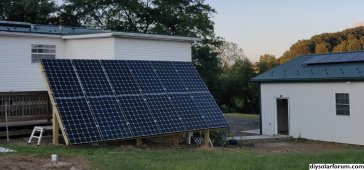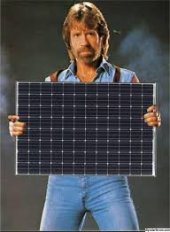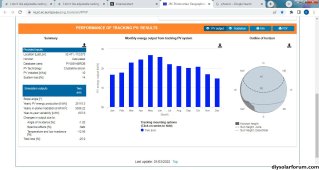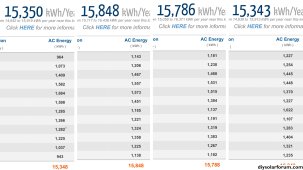The problem here is if I get snow on the panels and it takes 2 days while the sun is shining to melt it off, followed by 4 days of fog/clouds, the battery bank will be depleted. Not an unusual occurrence and if windy it takes more battery. If I had those 2 days of lost production instead, going the next 4 would be easy.
During days the sun dogs are out, it is -20F for possibly weeks. Sun shines but if I had a fixed angle array, it would be covered in snow that whole time because the panel surface won't get warm. Last year I ran a test, left panels at 47 degrees when it snowed, let 3 inches stick on it, then tilted to 65 degrees the first sunny day. It took 2 days to get the snow off, the snow would slide down to the silver frame and refreeze due to the cold temps. Any snow after that and what little snow stuck to the panels; if it started snowing while the sun had warmed up the panels. was gone before noon the next day.
That told me I made the right decision for this area. Fixed mounts work in some areas, move north with snow and you would think much differently.
One thing I always wondered is if the calculators on PV Watts and JRC Photovoltaic (my preferred) are based upon historical data for cloudy days or the sun coming up everyday and shining? My guess is the calculators are based upon real historical data using PV panels. The big question with using one of these calculators is whether any snow was on the panels and how long before it was cleared off?
smartflower.com







